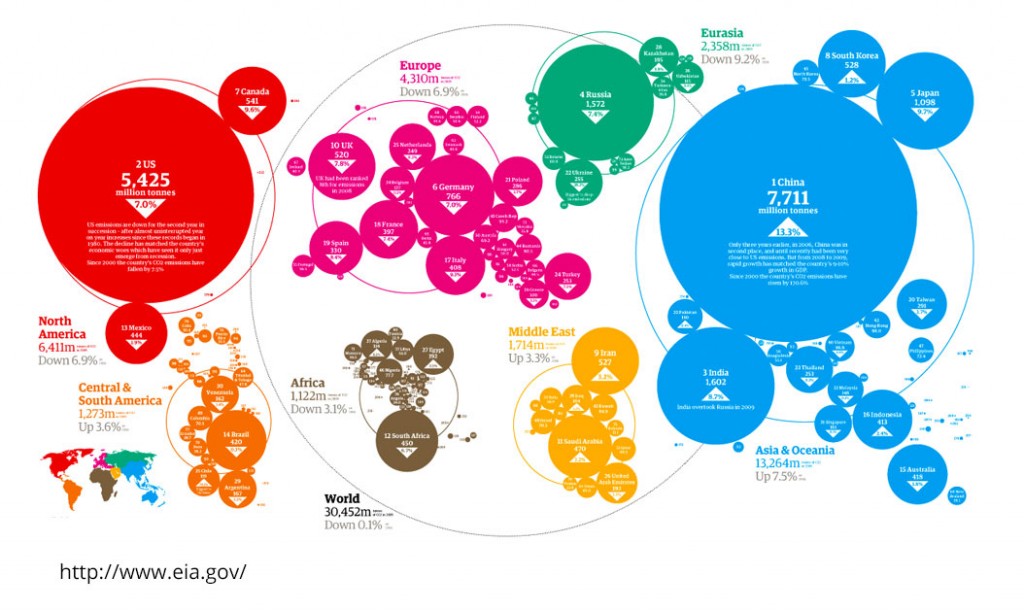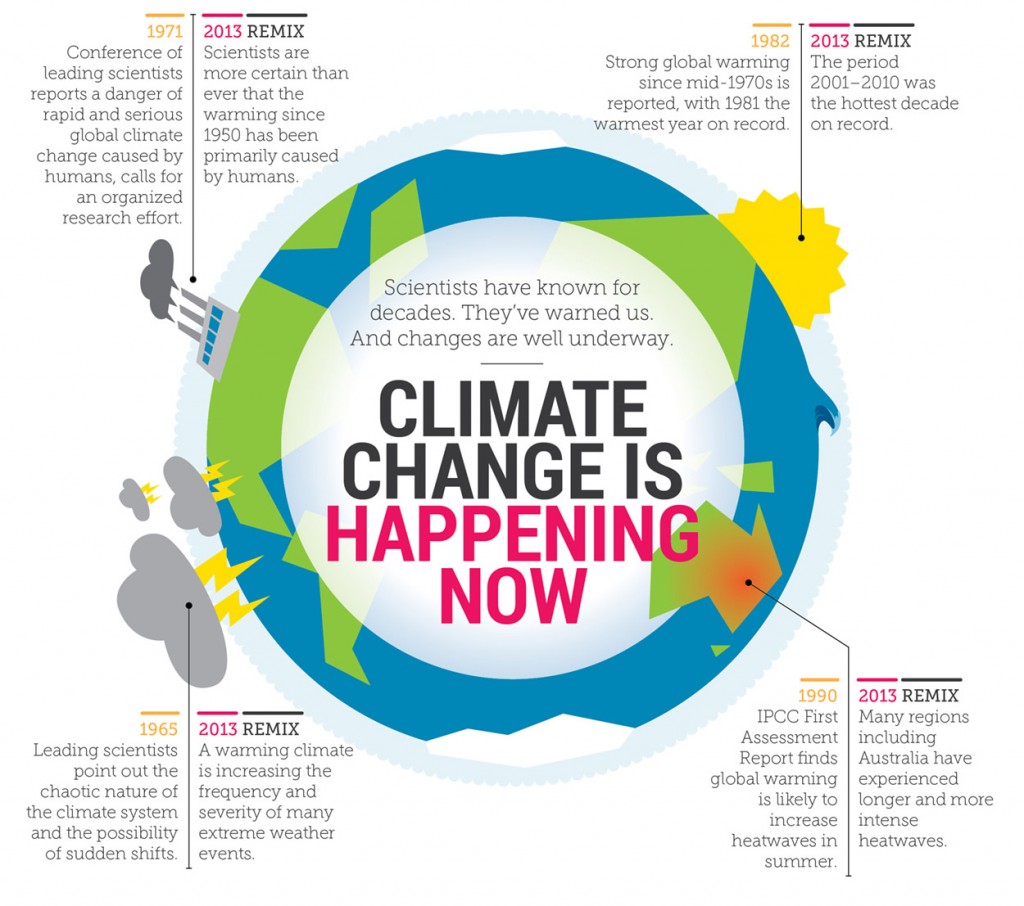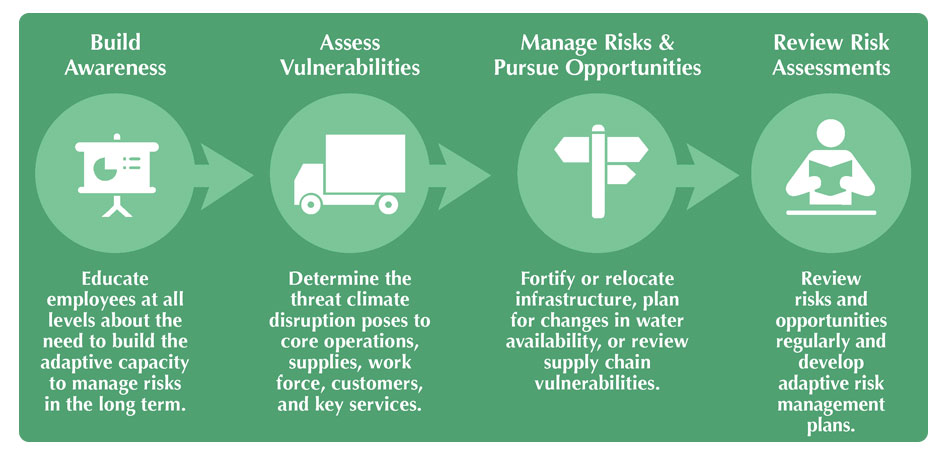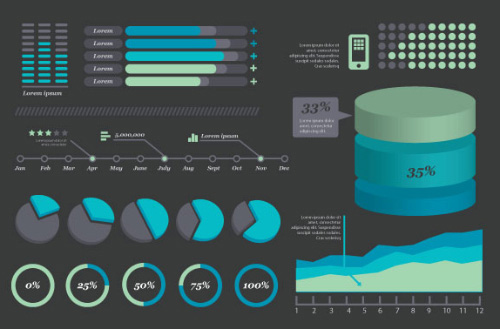For those who don’t know what is going on, is very simple, greenhouse gases allow shortwave radiation from the sun to pass through the atmosphere and warm the Earth’s surface. The energy that then radiates out from the surface, longwave radiation, is trapped by the same greenhouse gases, warming the air, oceans, and land. When coal, oil, and natural gas are burned, they release enormous amounts of greenhouse gases — especially carbon dioxide, or CO2, which is by far the most prevalent. The gases add up much faster in the atmosphere than natural processes can absorb them, and thereby wreak Earth’s climate system.
To date, warming and melting of the Arctic has occurred far faster than was projected, leading some scientists to conclude that the Arctic could be ice free in the summer as early as 2012. If the Greenland ice sheet were to melt completely, sea level would rise about 20 feet, leaving hundreds of millions of coastal residents — people, plants, animals — homeless. And severe weather events like hurricanes, droughts, and heat waves, already on the rise, will occur more frequently than ever. Countless other disastrous outcomes, many of which can’t be precisely modeled for predictive purposes, make climate change a looming threat.If things continue the way they are by 2050 this will amount to 35 percent of all plant and animal life currently in existence — at least a million species.
IS A FULL OUT WAR
Humans have added so much greenhouse gases that the greenhouse effect that first made life possible now threatens the world as we know it.
The “War Against Nature” is escalating at an exponential rate throughout the world and the bloating population of humans are now feeling the wrath of climate disruption and the consequences of razing its magnificent jungles. Today there are more severe and frequent floods displacing a half of a million people regularly, massive hillside slums, droughts, hurricanes, extinction of fauna and flora and unimaginable squalor with nil by way of sanitation for people.
Some Facts
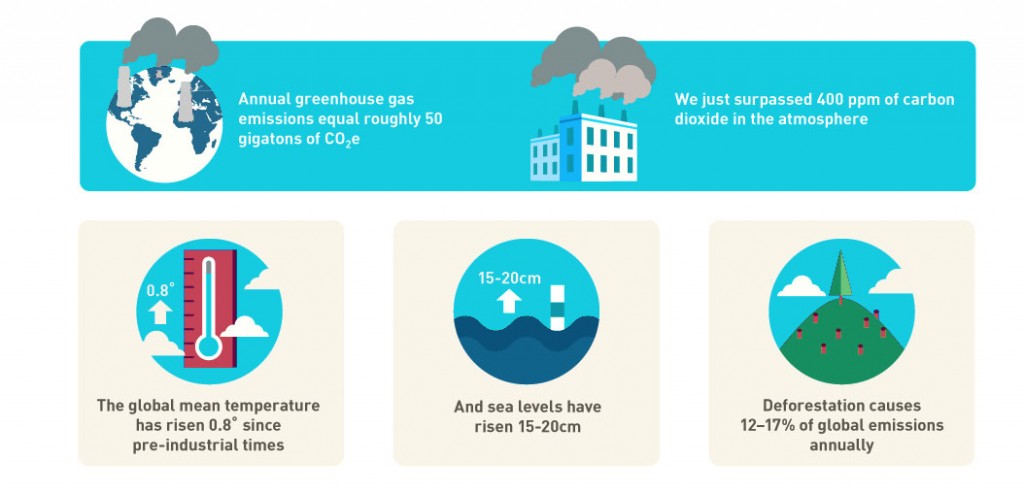
Who is causing the most damage to Nature?
Nature fights back… Who is most likely to get hurt?
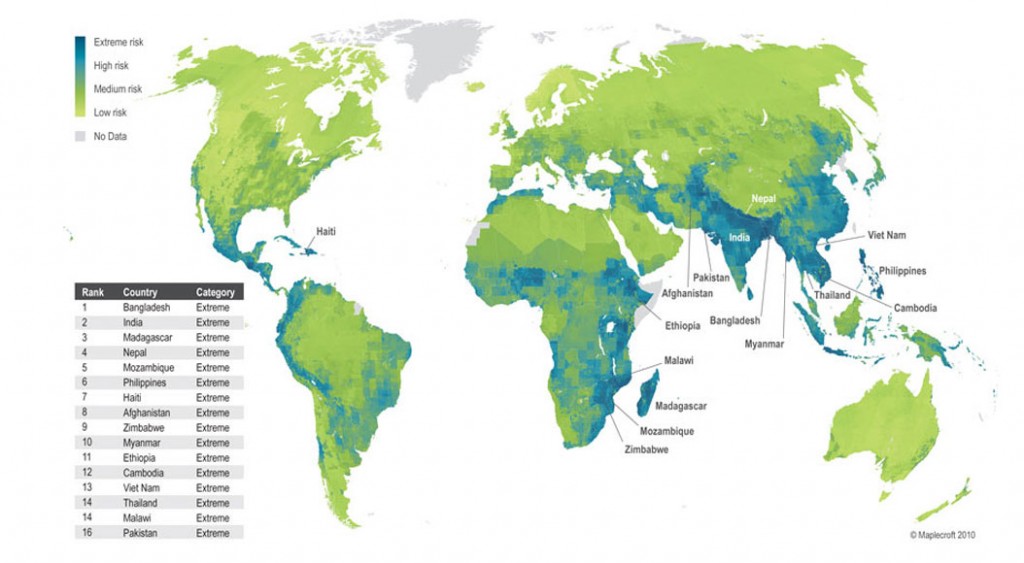
We all lose!

The bottom line…

How to stop this war against nature?
Governments can take several steps to reduce the threat of global warming. First and foremost, the United States and other industrial nations must use less of the fossil fuels — especially coal, oil, and gasoline — that produce carbon dioxide, the most significant heat-trapping gas. Industrial countries are responsible for the largest share of worldwide emissions of heat-trapping gases. But these nations also have a great ability to switch to cutting-edge energy technologies that produce fewer of these emissions.
The nations of the world must negotiate a climate change treaty with legally binding limits on emissions of heat-trapping gases.
The United States can reduce its carbon-dioxide emissions through four principal strategies that make use of new energy technologies: improving energy efficiency, developing renewable energy resources such as solar and wind power, reducing gasoline consumption for transportation, and switching from coal and oil to natural gas.
Improve Energy Efficiency
The less energy we use, the less carbon dioxide we will produce. Over the past 20 years, American industry and consumers have begun to switch to more-efficient motors, vehicles, appliances, windows, and manufacturing processes. This switch has saved considerable energy and money, but much greater efficiency is possible.
Develop Renewable Energy
Clean, safe, renewable sources, such as solar, wind, and sustainably grown biomass (plant matter), can provide us with energy but do not contribute to global warming. These technologies are ready to be deployed much more widely, but government policies must encourage their use.
Reduce Gasoline Consumption for Transportation
Cars, trucks, and buses consume over half of the oil used in the United States. Highly efficient gasoline-powered cars, and alternatively fueled vehicles such as electric and fuel-cell cars and buses, can reduce carbon dioxide emissions by using less or no gasoline. In addition, policies can encourage consumers to drive less and to use alternatives to single-passenger automobile trips, such as carpools, bicycles, and public transportation.
Switch from Coal and Oil to Natural Gas
Although natural gas is a fossil fuel, it produces less carbon dioxide than either coal or oil. Changing from coal to natural gas for generating electricity and from oil to natural gas for home heating is thus desirable as a quick fix, even though these switches alone cannot reduce carbon dioxide emissions nearly as much as is necessary.

Additional Government Steps
Reducing American use of coal, oil, and gasoline would start to address the global warming threat, but other steps, such as transferring technology to developing countries, preserving forests, decreasing atmospheric methane, continuing to phase out CFCs, and slowing down population growth, are also important. They can also provide benefits in addition to reducing global warming. Forest preservation, for example, would protect endangered species, while slower population growth would make it easier to supply adequate food for all the world’s people.
Transfer Technology to Developing Countries
American businesses, the government, and international organizations need to find ways to transfer advanced energy technologies to developing countries, so that those nations can build their economies without having to use the older, polluting fossil fuel technologies that the industrial countries are now trying to phase out.
Preserve and Plant Forests
Trees take in carbon dioxide and use it to grow. Deforestation, especially in the tropics where many of the largest, most important forests are located, contributes significantly to global warming. Efforts to preserve forests and to plant trees on deforested land are essential not only for preventing global warming but also for preserving biodiversity.
Decrease Methane in the Atmosphere
Although methane contributes much less to global warming than does carbon dioxide, it is still responsible for about 15 percent of the problem. Among other steps to decrease methane emissions, the nations of the world can prevent leaks from natural gas pipelines, cut methane emissions from landfills, and reduce their use of beef for food.
Continue to Phase Out CFCs
Because chlorofluorocarbons are responsible for depleting the protective ozone layer, the nations of the world have agreed to stop using them. These chemicals also trap heat, so vigilance in enforcing the international agreements to phase out their use will help slow global warming as well.
What Businesses can do?
Your turn to take action….
Climate change affects us all. Here are tips on how you can personally make a difference.
At Home – reduce, reuse, recycle!
- Buy minimally packaged goods
- Recycle paper, plastic, glass, and metal. Reuse, mend, and repurpose things to save money and divert waste from your local landfill
- Plug air leaks in windows and doors to increase energy efficiency
- Adjust your thermostat, lower in winter, higher in summer
- Replace old appliances with energy efficient models and light bulbs
- Save electricity by plugging appliances into a power strip and turning them off completely when not in use
- Wash clothes in cold or warm water
- Run dishwashers only when full and don’t use heat to dry dishes
- Eat less meat, poultry, and fish
- Plant Trees – Enter tree planting pledges online, then plant indigenous or locally appropriate trees where you live. View results of tree planting efforts globally.
At Work and On the Go
- Print double-sided or not at all
- Always use reusable cups, knives and forks.
- Think before you travel. If a video conference call will suffice, spare the hassle and expense, and CO2 emissions.
- Avoid traffic jams and decrease your personal carbon footprint by walking, bicycling, and using mass transit whenever possible. Consider carpooling with friends, neighbors, and co-workers.
- Taking the stairs can sometimes be faster than waiting in long elevator lines. In addition to saving energy, taking the stairs gives you a mild workout which will help keep you healthy.
- Have your business join the UN Global Compact and become part of the solution for two of today’s largest scale environmental issues – Climate Change and Water Sustainability.Here are some additional tips on how to kick the CO2 habit
Know Your Carbon Footprint
Find out how much CO2 your lifestyle produces and the amount of resources it takes to live the way you do. Once you know the impact your lifestyle causes you can start to make adjustments and monitor improvement. Encourage others to do the same. Calculate CO2 emissions resulting from your air travel.
Learn More — Knowledge is power.
- Learn about the science behind climate change
- Learn about: Mitigation , Adaptation , Technology , and Financing
- Watch videos about the effects of climate change
- Read important documents, reports, and climate change conventions such as the IPCC report, the UNDP Human Development Report, and national reports.
- Follow the latest climate negotiations
Visit one of these organizations for more information
[ut_one_fourth]
 United Nations Framework Convention on Climate Change
United Nations Framework Convention on Climate Change Convention on Biological Diversity
Convention on Biological Diversity International Civil Aviation Organization
International Civil Aviation Organization International Monetary Fund
International Monetary Fund Office of the High Commissioner for Human Rights
Office of the High Commissioner for Human Rights United Nations Department of Economic and Social Affairs
United Nations Department of Economic and Social Affairs United Nations Economic Commission for Latin America and the Caribbean
United Nations Economic Commission for Latin America and the Caribbean United Nations Industrial Development Organization
United Nations Industrial Development Organization United Nations University
United Nations University World Tourism Organization
World Tourism Organization
[/ut_one_fourth]
[ut_one_fourth]
 Intergovernmental Panel on Climate Change
Intergovernmental Panel on Climate Change Food and Agriculture Organization
Food and Agriculture Organization International Fund for Agricultural Development
International Fund for Agricultural Development International Strategy for Disaster Reduction
International Strategy for Disaster Reduction United Nations Commission on Sustainable Development
United Nations Commission on Sustainable Development United Nations Development Programme
United Nations Development Programme United Nations Educational, Scientific and Cultural Organization
United Nations Educational, Scientific and Cultural Organization United Nations Institute for Training and Research
United Nations Institute for Training and Research Universal Postal Union
Universal Postal Union World Health Organization
World Health Organization
[/ut_one_fourth]
[ut_one_fourth]
 United Nations Environment Programme
United Nations Environment Programme Global Climate Observing System
Global Climate Observing System International Labour Organization
International Labour Organization International Telecommunication Union
International Telecommunication Union United Nations Programme on HIV/AIDS
United Nations Programme on HIV/AIDS United Nations Conference on Trade and Development
United Nations Conference on Trade and Development United Nations Economic Commission for Asia and the Pacific
United Nations Economic Commission for Asia and the Pacific United Nations Human Settlements Programme
United Nations Human Settlements Programme World Bank
World Bank
[/ut_one_fourth]
[ut_one_fourth_last]
 World Meteorological Organization
World Meteorological Organization Global Environment Facility
Global Environment Facility International Maritime Organization
International Maritime Organization United Nations Office for the Coordination of Humanitarian Affairs
United Nations Office for the Coordination of Humanitarian Affairs United Nations Convention to Combat Desertification
United Nations Convention to Combat Desertification United Nations Economic Commission for Europe
United Nations Economic Commission for Europe United Nations High Commissioner for Refugees
United Nations High Commissioner for Refugees United Nations Population Fund
United Nations Population Fund World Food Programme
World Food Programme
[/ut_one_fourth_last]


